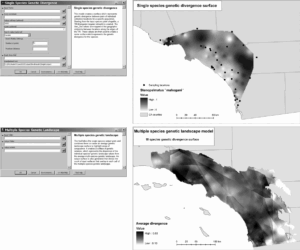
Hello, I am Keegan Floyd. I am a freshman planning on majoring in Genetics, with a possible double major (or at least a minor) in Data Analytics. I apologize for the picture; I put a mask on in 2020 and haven’t taken it off for the very few photographs taken of me since, so you get this picture of me hiding in my closet. I am taking GEOG 191 for two reasons; first, in an effort to broaden my academic horizons to see how different fields intersect with my chosen areas of interest; second, this is a useful skill set to have if I lean more into bioinformatics in my future career.
I found the first chapter of Schuurman’s Introduction to GIS to be surprising, as my knowledge of GIS and geography, in general, was almost nonexistent before signing up for this class. I was not aware that a system designed for geography could intersect with so many other scientific fields, influencing large parts of my daily life through its importance in agriculture, urban planning, and healthcare. The uses of GIS in public health surprised me the most; it just never occurred to me that it is necessary to use geographical data to define and analyze health at the population level.
I appreciated how much detail the chapter included on the two “sections” of GIS: GIScience and GISystems; I believe that portion of the chapter deepened my understanding of the subject by showing how the two intersect via examples of both in day-to-day life. I am curious to see which of the two sides of GIS we learn more about in this course, though if I had to guess, it would be GIScience due to its position as the underlying theory behind GISystems.
This passage encouraged me to think about the applications of GIS within my major, which lead to my fascinating discovery of just how much population genetics relies on mapping systems to analyze data and predict research outcomes. This fact reassured me that this course will be beneficial in my future endeavors despite how different it is from my typical major-related classes.
This chapter opened my mind to the idea that GIS is not a simple information system, as the name suggests, but rather a broadly defined concept with more applications than could possibly be included in a single definition. I am looking forward to wrapping my head around this system throughout this course. Overall, this chapter has helped me gain a better understanding of what I need to know and what questions I need to ask to succeed in this course.
I used google scholar to look into the applications of GIS concerning genetics and came across an article about the use of GIS technology in landscape genetics. This article talks about utilizing GIS to map genetic variance in several different species across a large area to reach a level of visualization of data that was previously much harder to attain. These maps can be used to find patterns of gene flow within and across species.
 My second topic of interest was GIS in relation to public health. I found an article discussing how GIS is particularly useful in the prediction of parasitic disease spread through the mapping of parasite appearances and the population density in an area. There is no accompanying map for this article.
My second topic of interest was GIS in relation to public health. I found an article discussing how GIS is particularly useful in the prediction of parasitic disease spread through the mapping of parasite appearances and the population density in an area. There is no accompanying map for this article.
Sources:
Fletcher-Lartey, S. M., & Caprarelli, G. (2016, February 2). Application of GIS technology in public health: successes and challenges. Parasitology, 143 (4), 401-415. Doi: 10.1017/S0031182015001869
Vandergast, A. G., Perry, W. M., Lugo, R. V., & Hathaway, S. A. (2010, August 16). Genetic landscapes GIS Toolbox: tools to map patterns of genetic divergence and diversity. Molecular Ecology Resources, 11 (1), 158-161. https://doi.org/10.1111/j.1755-0998.2010.02904.x